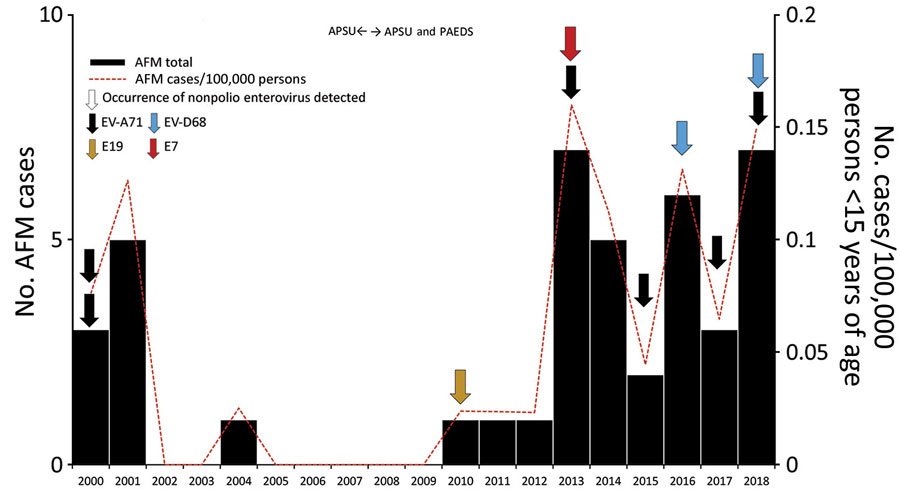Volume 28, Number 1—January 2022
CME ACTIVITY - Synopsis
Using the Acute Flaccid Paralysis Surveillance System to Identify Cases of Acute Flaccid Myelitis, Australia, 2000‒2018
Figure 2

Figure 2. Annual number of cases of AFM and rate (per 100,000 persons) in 41 children <15 years of age and enteroviruses identified in stool specimens, Australia, 2000‒2018. Horizontal arrows indicate years when surveillance for AFM was conducted by the APSU and by both APSU and PAEDS. AFM, acute flaccid myelitis; APSU, Australian Paediatric Surveillance Unit; E, echovirus; EV, enterovirus; PAEDS, Paediatric Active Enhanced Disease Surveillance Network.
1Members of this panel are listed at the end of this article.
Page created: October 08, 2021
Page updated: December 16, 2021
Page reviewed: December 16, 2021
The conclusions, findings, and opinions expressed by authors contributing to this journal do not necessarily reflect the official position of the U.S. Department of Health and Human Services, the Public Health Service, the Centers for Disease Control and Prevention, or the authors' affiliated institutions. Use of trade names is for identification only and does not imply endorsement by any of the groups named above.